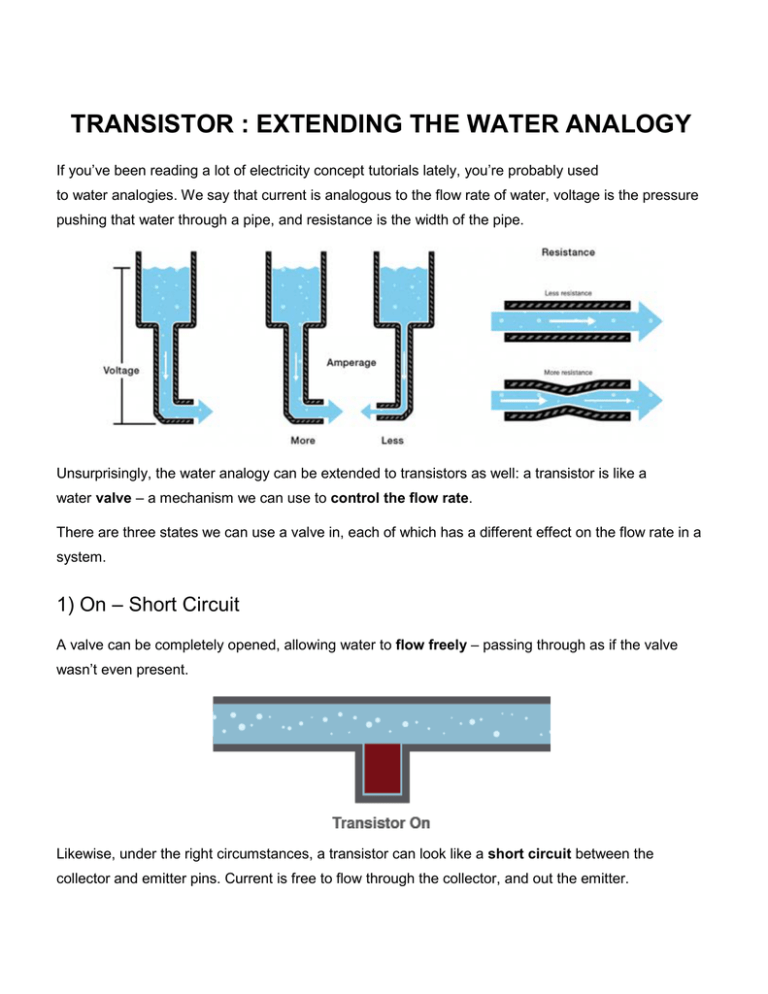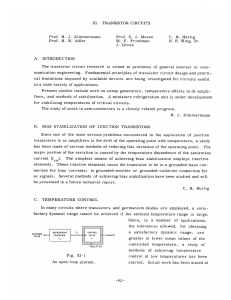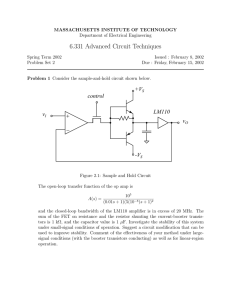Transistor Water Analogy: Understanding Transistors
advertisement

TRANSISTOR : EXTENDING THE WATER ANALOGY If you’ve been reading a lot of electricity concept tutorials lately, you’re probably used to water analogies. We say that current is analogous to the flow rate of water, voltage is the pressure pushing that water through a pipe, and resistance is the width of the pipe. Unsurprisingly, the water analogy can be extended to transistors as well: a transistor is like a water valve – a mechanism we can use to control the flow rate. There are three states we can use a valve in, each of which has a different effect on the flow rate in a system. 1) On – Short Circuit A valve can be completely opened, allowing water to flow freely – passing through as if the valve wasn’t even present. Likewise, under the right circumstances, a transistor can look like a short circuit between the collector and emitter pins. Current is free to flow through the collector, and out the emitter. 2) Off – Open Circuit When it’s closed, a valve can completely stop the flow of water. In the same way, a transistor can be used to create an open circuit between the collector and emitter pins. 3) Linear Flow Control With some precise tuning, a valve can be adjusted to finely control the flow rate to some point between fully open and closed. A transistor can do the same thing – linearly controlling the current through a circuit at some point between fully off (an open circuit) and fully on (a short circuit). From our water analogy, the width of a pipe is similar to the resistance in a circuit. If a valve can finely adjust the width of a pipe, then a transistor can finely adjust the resistance between collector and emitter. So, in a way, a transistor is like a variable, adjustable resistor. Amplifying Power There’s another analogy we can wrench into this. Imagine if, with the slight turn of a valve, you could control the flow rate of the Hoover Dam’s flow gates. The measly amount of force you might put into twisting that knob has the potential to create a force thousands of times stronger. We’re stretching the analogy to its limits, but this idea carries over to transistors too. Transistors are special because they can amplify electrical signals, turning a low-power signal into a similar signal of much higher power. Kind of. There’s a lot more to it, but that’s a good place to start! Check out the next section for a more detailed explanation of the operation of a transistor. Source : https://learn.sparkfun.com/tutorials/transistors#extending-the-wateranalogy



